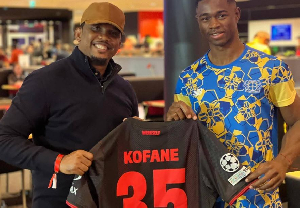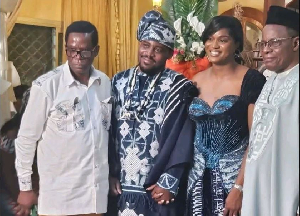Title: 1) AKOSÈ READER & GRAMMAR BOOK 2) NNINONG HISTORY
Author:Ekane Joseph Ajale
Price:Not stated
Publisher: Auto-published
Reviewer: Bouddih Adams
Ekane Joseph Ajale must be a real Bakossi patriot as he seeks to immortalise the language and history of the Bakossi people of Kupe Mwanenguba in the Southwest Region of Cameroon. Akosè Reader & Grammar Book
Akosè Reader & Grammar Book is a documentation and, thus, preservation of the Akosè Language of the Bakossi people, for posterity.
As Ekane himself puts it: “The production of the book was motivated principally by the desire to transform into a written language, Akose which had existed only in oral form for perhaps thousands of years and, consequently, preserve it.” Ekane equally posits that a “written language stores knowledge.”
The 106-page book is arranged according to the Akosè alphabet which has 27 letters - as opposed to the English alphabet which has only 26.
To ease pronunciation of a sound that is very recurrent in the Akosè language, Ekane had to create one vowel ‘?’ making it 27 letters of the Akosè alphabet.
The Akosè Reader & Grammar Book is structured as a textbook and is most appropriate for both teaching and learning the Akosè language and grammar.
It is divided into sections each handling topics like: ‘Tone - where the voice rises and falls and how to pronounce words similarly spelled but different in meaning; Liaison - how the words are connected where the vowel plays a key role like in French; Sentence - how to connect words, with their syntactic organisation elaborated under. It also provides parts of speech like; subject, verb adjective and adverb, nouns and pronouns, with ample examples. The work also makes provision for practical exercises; oral and written.
There is also a lexical section which gives the meaning of Akosè words in English. It also elaborates how to count from one to one million in Akosè and how to read time (on the clock) in Akosè.
Ekane’s work is a challenge to composers of songs, poets, playwrights and other writers, to learn and use the Akosè language in their works.
The book is important as it provides solutions to problems facing many Bakossi youths today, particularly those born outside Bakossi territory and, as such, they find themselves handicapped in either not speaking or not being able to understand their mother tongue and, consequently, appear as strangers among their Akosè-speaking friends.
It also comes in handy to those parents who want their children to learn the Akosè language so they can preserve their family secrets.
NNINONG HISTORY (A Historical and Socio-cultural Study of Nninong People) Nninong History attempts to record the history of the Nninong people from its very beginning to most recent times, states the author, Ekane Joseph Ajale.
The author, however, states that his work “doesn’t in any way claim to have a monopoly of knowledge in the realm of Nninong history” and so he remains open to receive reactions or constructive criticism from anyone who is more versed than himself with the topics treated in the book.
The book opens with the geographical location of the Nninong people or descendants of Anno-Ngoeh, who number about 9,000, right down to geographical features like climate, vegetation, drainage and so on. It also covers the socio-cultural aspects of the Nninong people including beliefs, laws and customs as well as their socio-economic activities.
The Nninong kingdom, before the coming of national government, was governed by a bundle of unwritten laws comprising of customs and habits and embodying all acts that were considered an offence in a traditional society, and for which appropriate sanctions were meted on defaulters (pg 17).
The work describes how clan states and villages were founded and traces the migration and settlement of the people right down to the genealogical trees of the families.
Ekane Ajale takes the pain to draw and paint pictures of household utensils, socio-cultural instruments like those used in song and dance, farming and hunting tools (pgs 73, 76 and 77) of the Nninong people. The work is even more warmly as the author attempts to give the equivalence of things and words in the Nninong mother tongue.
It is a document on a history going back thousands of years as well as a record of events like wars, for instance: Nninong-Elung War (before 1892) and the advent of Germans (pgs 85 -92); the First and Second World Wars and their effects in Nninong (pgs 202 – 204); civilisation and the coming of western education and evolution, to date.
Both books are recommended to each and every Nninong family and to researchers in Linguistics, History, Anthropology and related subjects.
Opinions of Saturday, 13 September 2014
Auteur: The Post Newspaper














